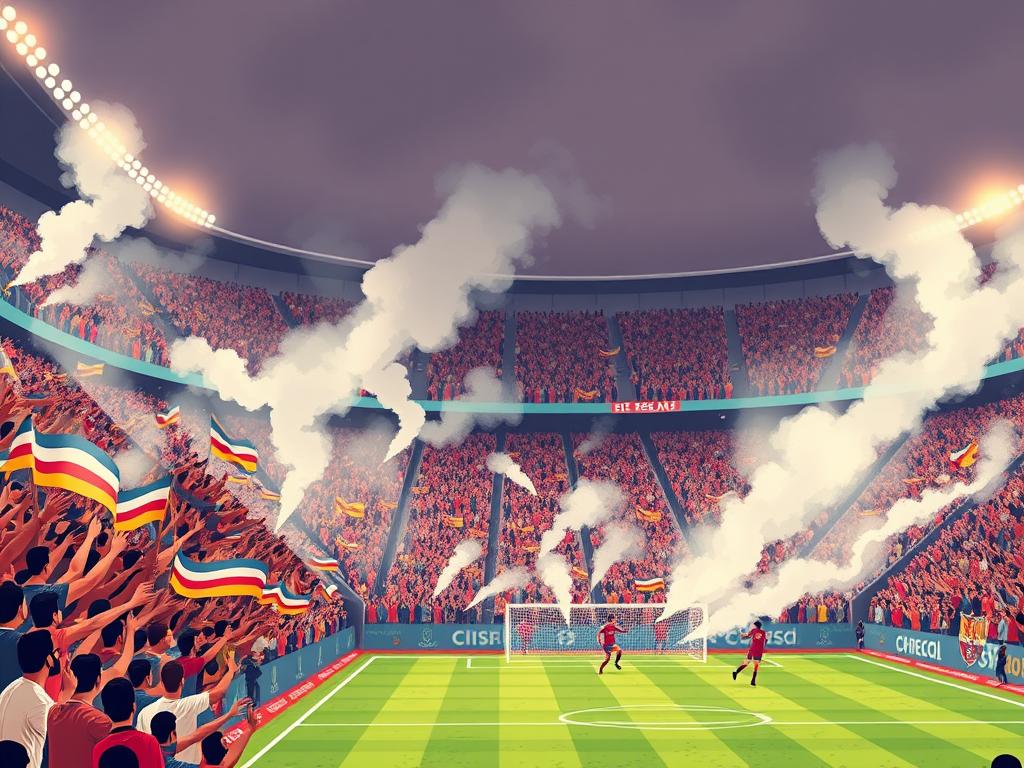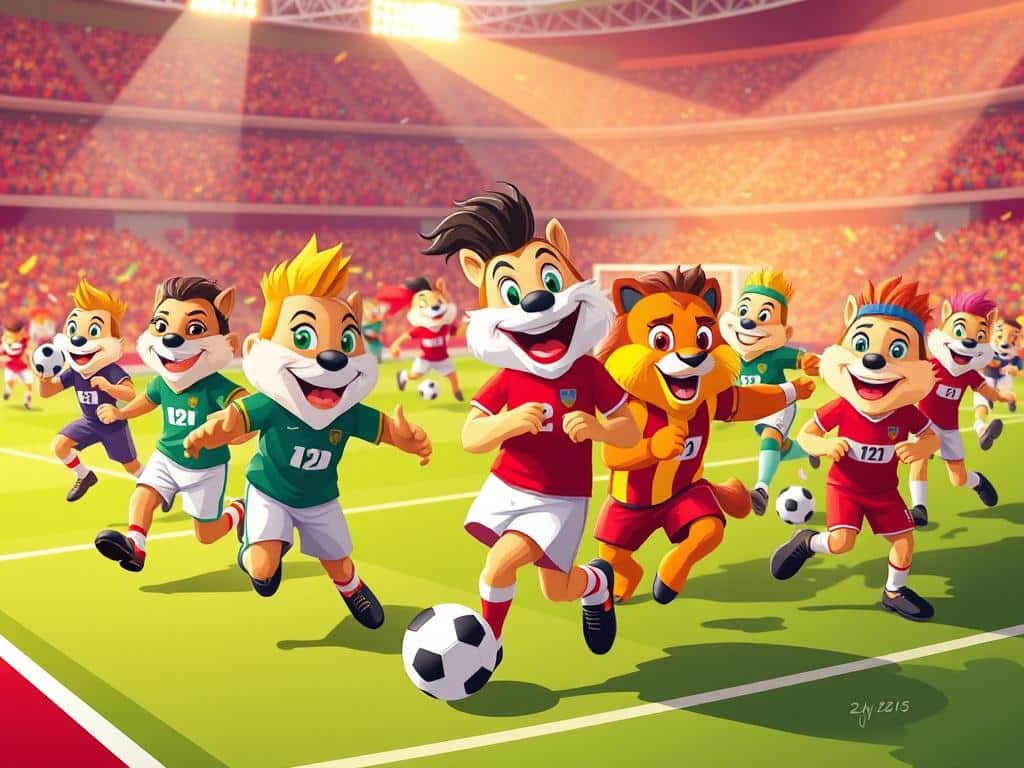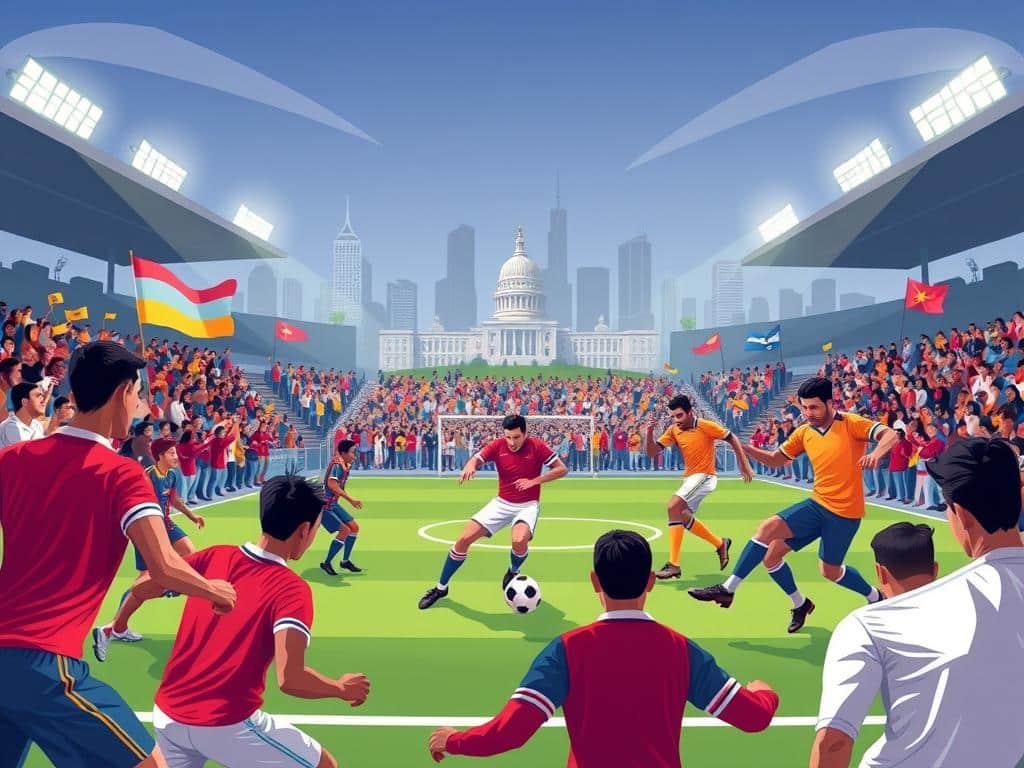I want to walk you from that first sketch to the moment a stand goes silent, then loud, as a giant banner blooms above the crowd. This piece pulls back the curtain so you can plan a display that fits your stand, budget, and timeline without guesswork.
I’ll show the practical steps: choosing materials like plastic sheeting or printed mesh, matching artwork to sightlines, and coordinating with your club and venue for permissions. You’ll also see the roles supporters and volunteers take on matchday—so tasks stay safe, fast, and energizing.
Key Takeaways
- Start with a clear message that suits your stand and fans.
- Pick materials based on weather, wind, and rigging options.
- Plan permissions and timing with the club and venue early.
- Assign simple volunteer roles to speed setup and avoid chaos.
- Use examples from top displays to inspire scale, not to copy.
What a tifo is and why supporters build them
When thousands lift one design at once, the end becomes a visual roar for the team.
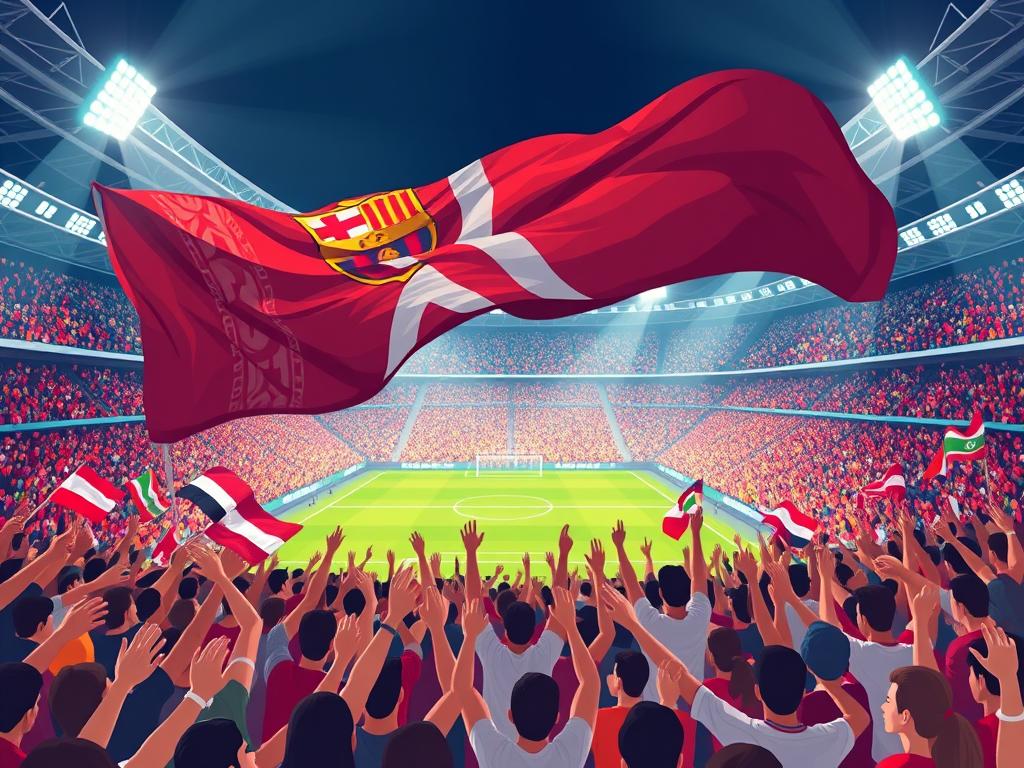
From tifosi to visual language
A tifo is a choreographed visual statement from supporters. It can be a single image that covers a stand or a mosaic made from seat cards.
The term comes from Italian tifosi — ardent followers — and that heritage shows in bold color blocks, simple lines, and a read that lands in seconds across a football crowd.
Who creates these displays
Ultras often lead design and logistics, but trusts or club-backed efforts now help with materials and access.
- Large displays—like anniversary banners or finals—require coordination across a whole section.
- Formats vary: hand-painted sheets, stitched prints, or seat-card mosaics chosen for budget, weather, and venue rules.
- Tifos pop at rivalries, cup nights, and farewells to turn shared emotion into a visible show of loyalty.
If you’re new, link up with the group running your end. You’ll learn timing, safety, and what the venue will approve before paint touches fabric.
How tifos are made in soccer: from idea to unveiling
Define the message and theme that fits the moment
Pick one short line or a bold image tied to the derby, milestone, or farewell. Keep the message instant and visual so your team recognizes it from the pitch.
Measure your stand and translate artwork to scale
Measure height, width, rail breaks, and sightlines. Grid the artwork so each panel reads from the halfway line and TV gantry. Strong outlines and few colors win on distance.
Choose materials and production methods
Match material to the weather: plastic sheeting for low cost, knitted polyester for bright prints, and airmesh for windy stadium corners.
Large pieces are printed in sections and stitched. Hand‑painting works for community builds and tight schedules.
Matchday execution
- Lock roles: tracers, painters, stitchers, rigging leads, and marshals.
- Do a dry run for rolling and signals. Arrive early to mount and brief volunteers.
- Watch the wind—delay or downsize if gusts could tear a banner. Budget materials and feed your crew; hours matter more than cash.
Planning, permissions, and safety in U.S. stadiums
Good displays start with a phone call to the stadium and a simple plan. Ask operations about production spaces, approved materials, and blackout dates before you book volunteers or rent supplies.
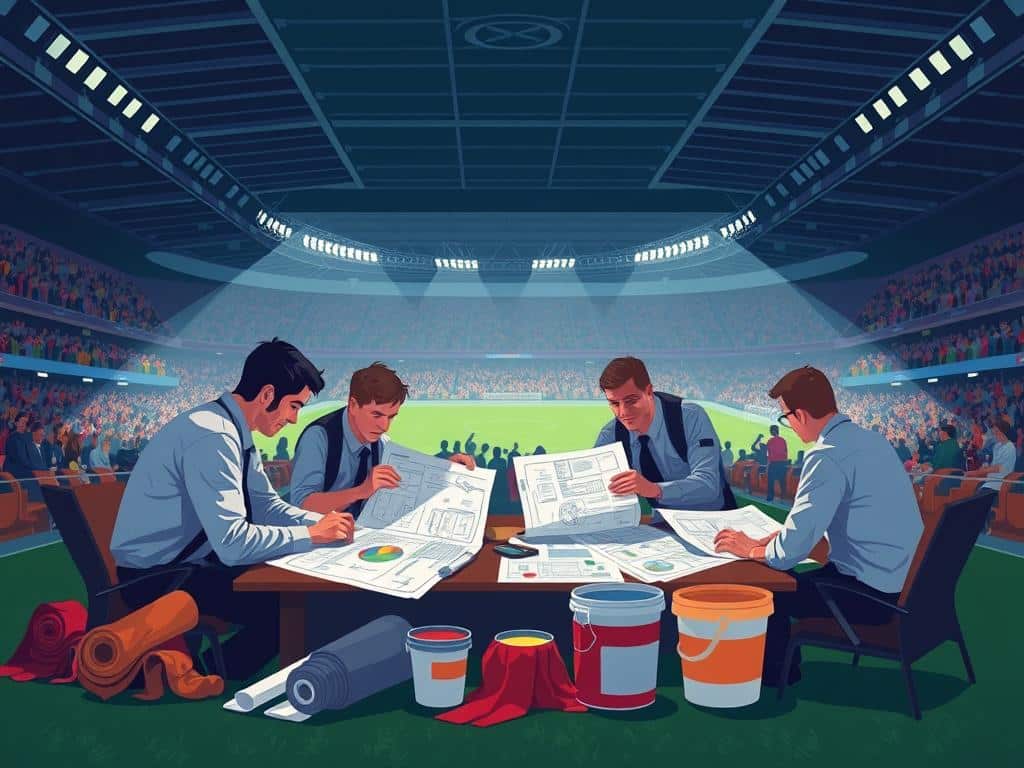
Submit a one‑pager that lists final dimensions, attachment points, and a safety plan. Note who will lead the rail team and how aisles will be cleared before the game.
Fire rules matter. Bring fabric specs and proof of flame retardant treatment. No open flames. Keep egress clear so the building engineer can sign off fast.
Wind cancels shows. Set a max gust threshold and name a no‑go authority. If gusts rise, keep the banner rolled or swap to a small piece that won’t catch air.
Paint indoors with low‑fume latex. Protect concrete with plastic. Assign a cleanup crew with scrapers and bags so concourses and lots are spotless when you leave.
- Test grommets, pre‑tie lines, and rehearse lifts.
- Brief your group on ladders, spotters, and signals.
- Store work safely between sessions to avoid rain or theft.
After the moment, roll and remove all tape and offcuts. Document what worked and what didn’t. A clean exit builds trust with venue ops and the wider fans culture.
Creative inspiration and real-world examples to guide your design
Great displays start with a clear image and a stubborn willingness to see it through. Below are vivid examples you can study, then adapt for your own end.
Iconic scale: Borussia Dortmund’s Yellow Wall
The Yellow Wall shows why scale and simplicity matter. Large, bold shapes read across 25,000 people.
They used these strengths for tributes, including a send‑off to Marco Reus that carried across the stand. Study contrast, outline, and a single clear read.
Big-match theater: anniversaries, finals, and rivalry lines
Aston Villa leaned local identity into European nights for their 150th with huge displays — even an Ozzy Osbourne banner in January 2025.
PSG’s 2025 pre‑final message, translated as “together we are invincible,” proved a crisp font and clean contrast can dominate a broadcast.
Manchester City used a clever rivalry jab that referenced Rodri’s Ballon d’Or and an Oasis lyric — wit that lived beyond one football night.
Case study: Cloud 9’s Headless Horsewoman
Cloud 9’s project began in August and became a roughly 40×50 ft piece made from two 20×100‑ft black plastic halves. They painted with indoor latex, dried panels with hairdryers during rain, and stitched seams on Oct 23 onward.
The group hung the banner after a Red Bulls game, mounted it to a pole Sunday morning, and kept costs just over $400 thanks to volunteers who painted, rolled, and even acted as human sandbags.
- Study scale — copy the clarity of Dortmund, not the exact artwork.
- Match intent — big nights need bold, legible designs like PSG’s finals piece.
- Plan for weather — Cloud 9 shows fast drying and rehearsal beat poor conditions.
Use these examples as seeds. Keep your club colors, your history, and your voice front and center so the final banner feels unmistakably homegrown.
Conclusion
Finish strong: a clear plan and steady execution turn an idea into a stand-wide moment.
Keep these basics: lock your message, scale it to your end, and pick materials that fit the stadium and weather. Partner with club ops early so approvals and fire rules are sorted.
Treat volunteers like gold. Give short shifts, clear roles, food, and one signal caller so the lift is calm and the banner snaps clean at kickoff.
Test the lift, track costs, store tools, and run a short debrief after the game. Small, steady improvements make your fans’ displays bolder each season.
I can’t wait to see what your supporters build—start small, learn fast, and let your tifo tell the story only your team can tell.


